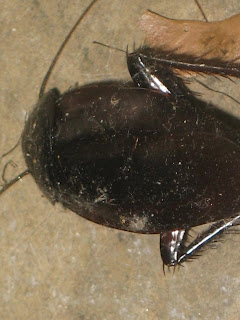
the exterior protective or supporting structure or shell of many animals (roach)


 Mutualism is a symbolic relationship in which both participants benefit. This is a picture of a pond in a park in Gatlinburg,TN. The ducks benefit because it is an environment that they like living in, while humans that visit get the benefit of seeing a nice view and also getting a exercise, because the park is huge.
Mutualism is a symbolic relationship in which both participants benefit. This is a picture of a pond in a park in Gatlinburg,TN. The ducks benefit because it is an environment that they like living in, while humans that visit get the benefit of seeing a nice view and also getting a exercise, because the park is huge.